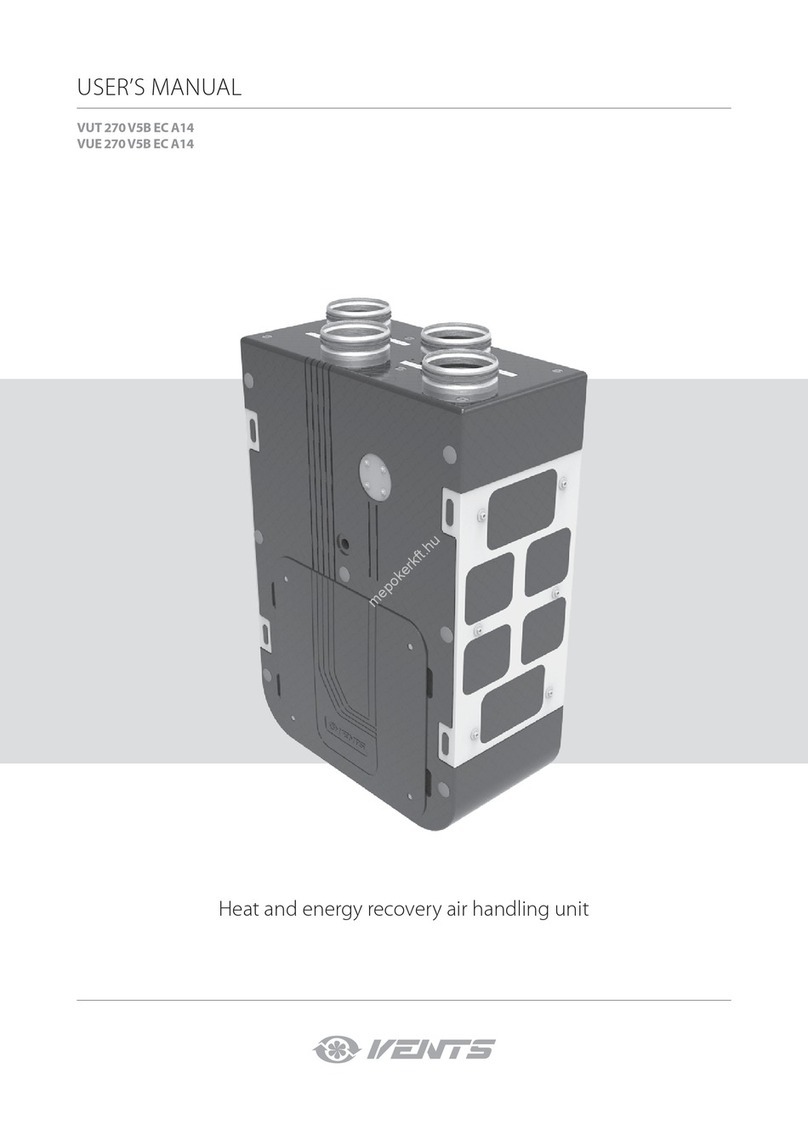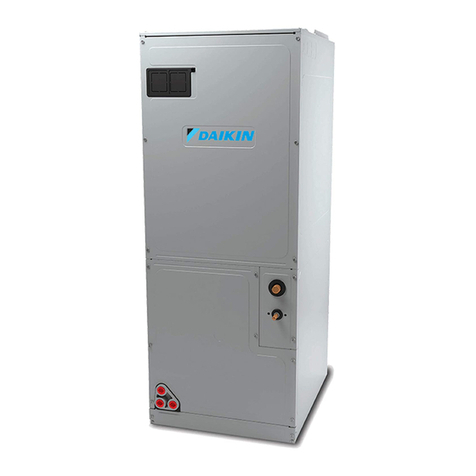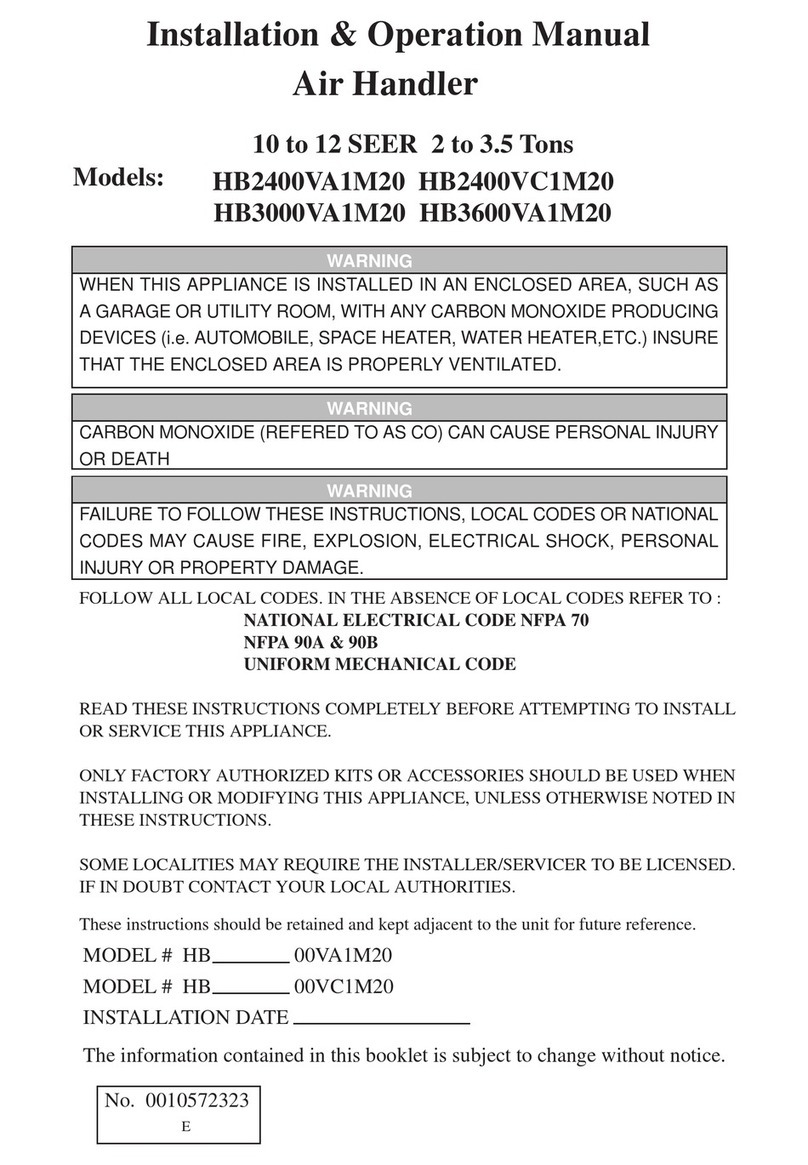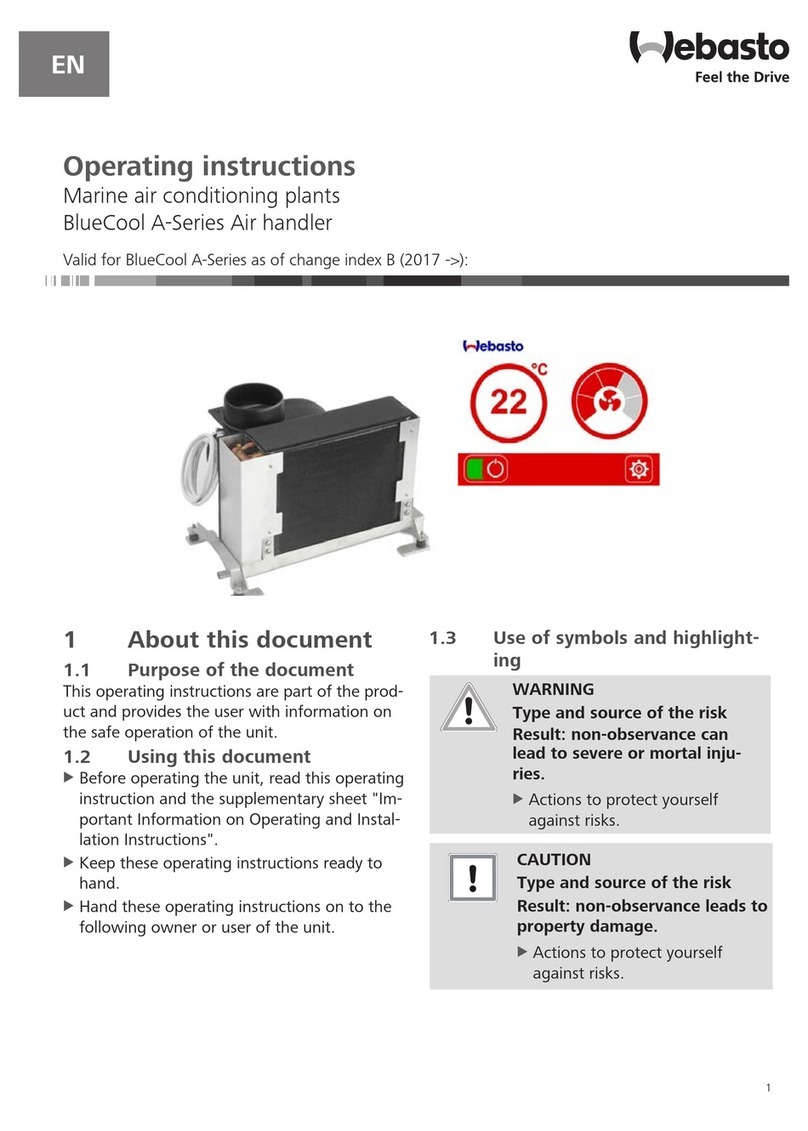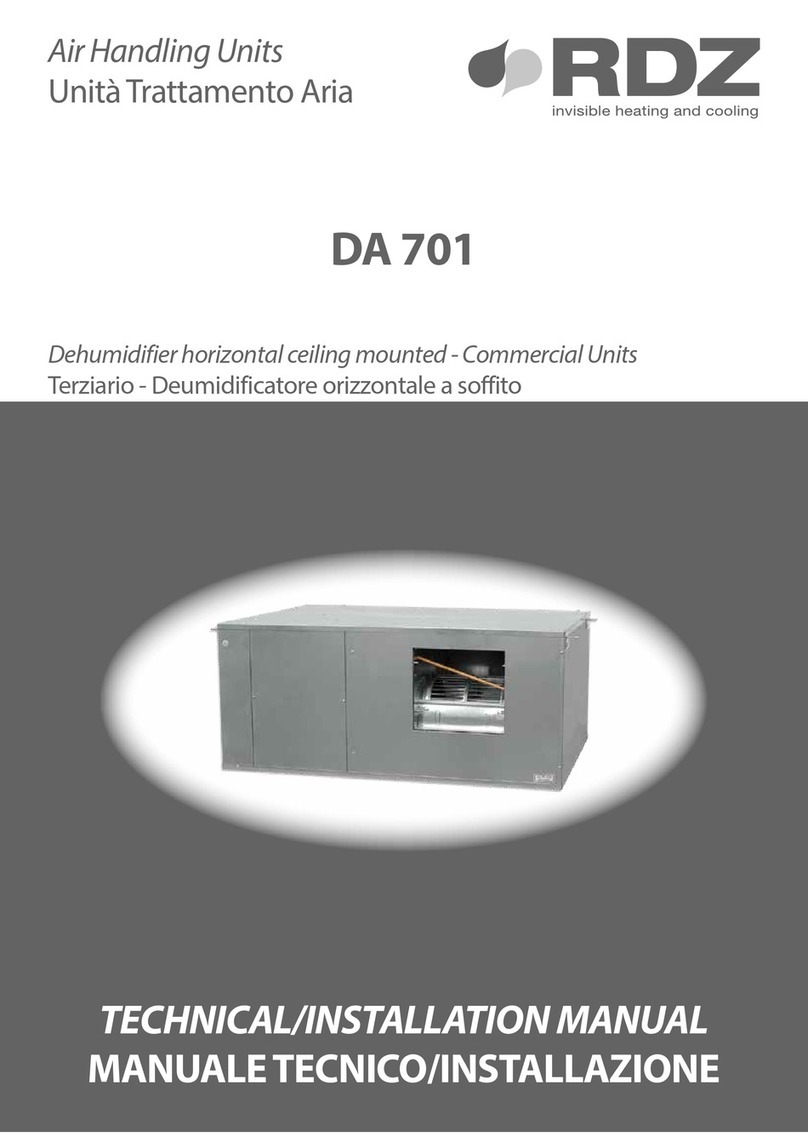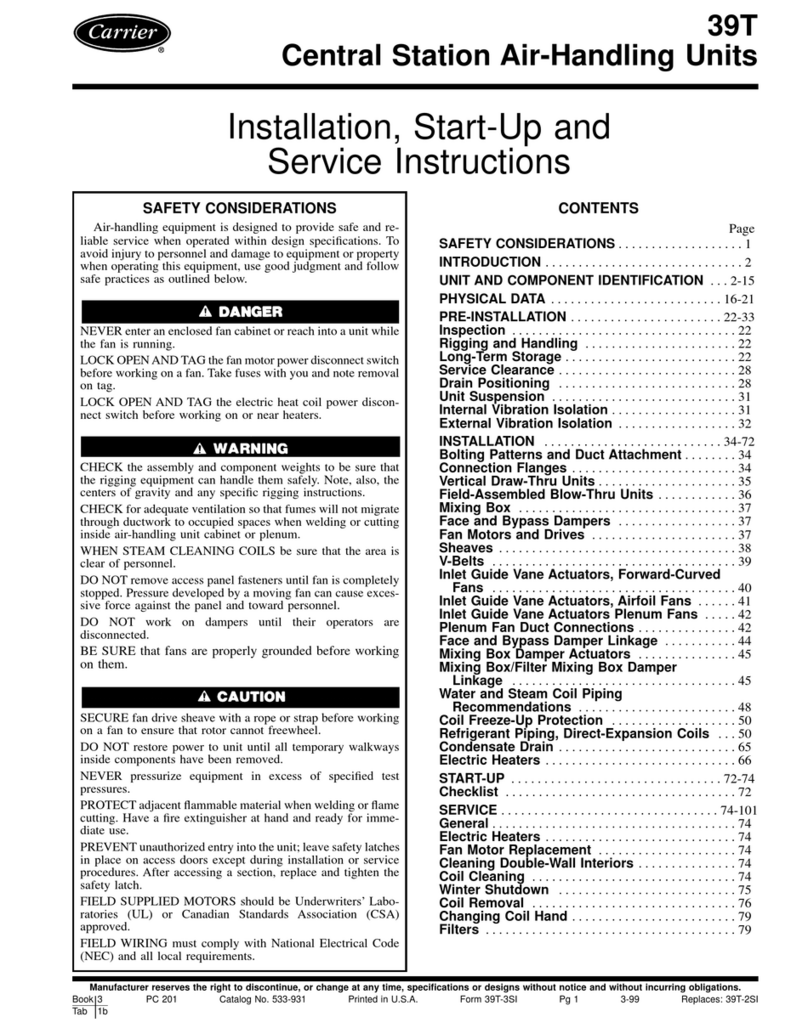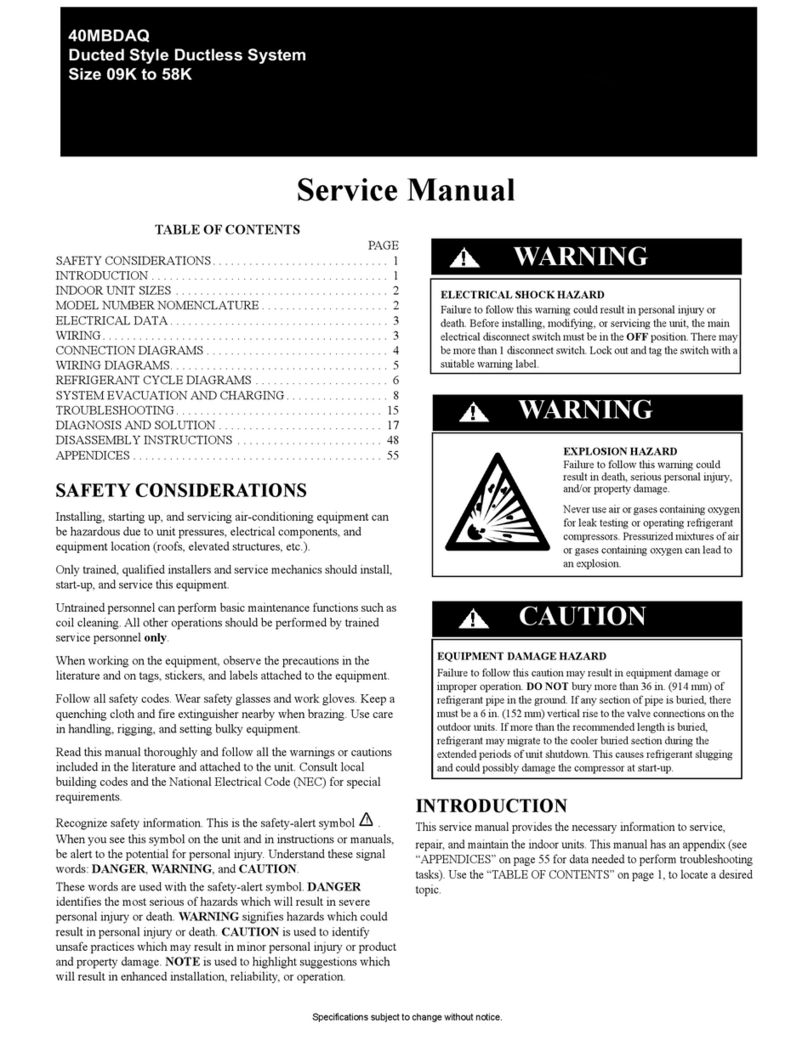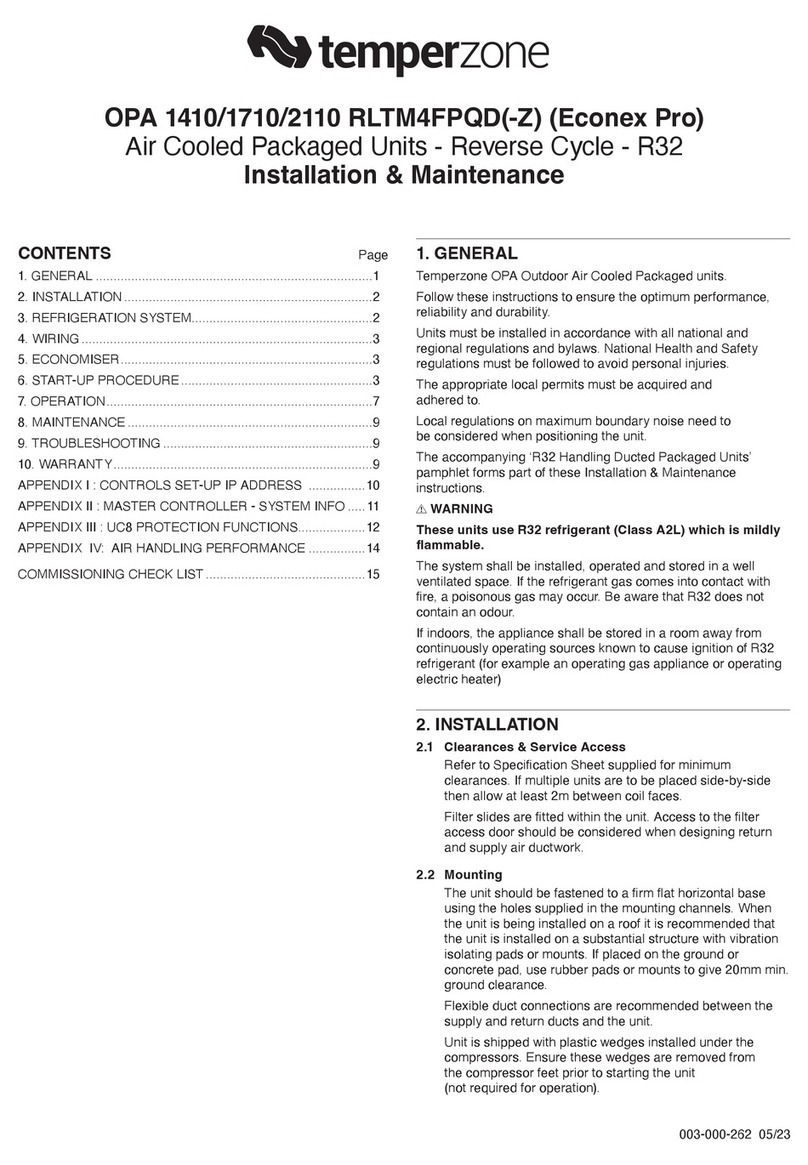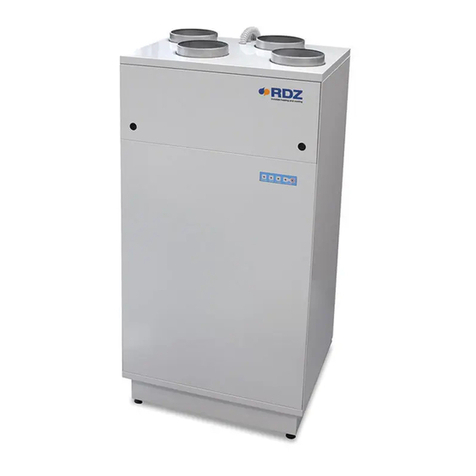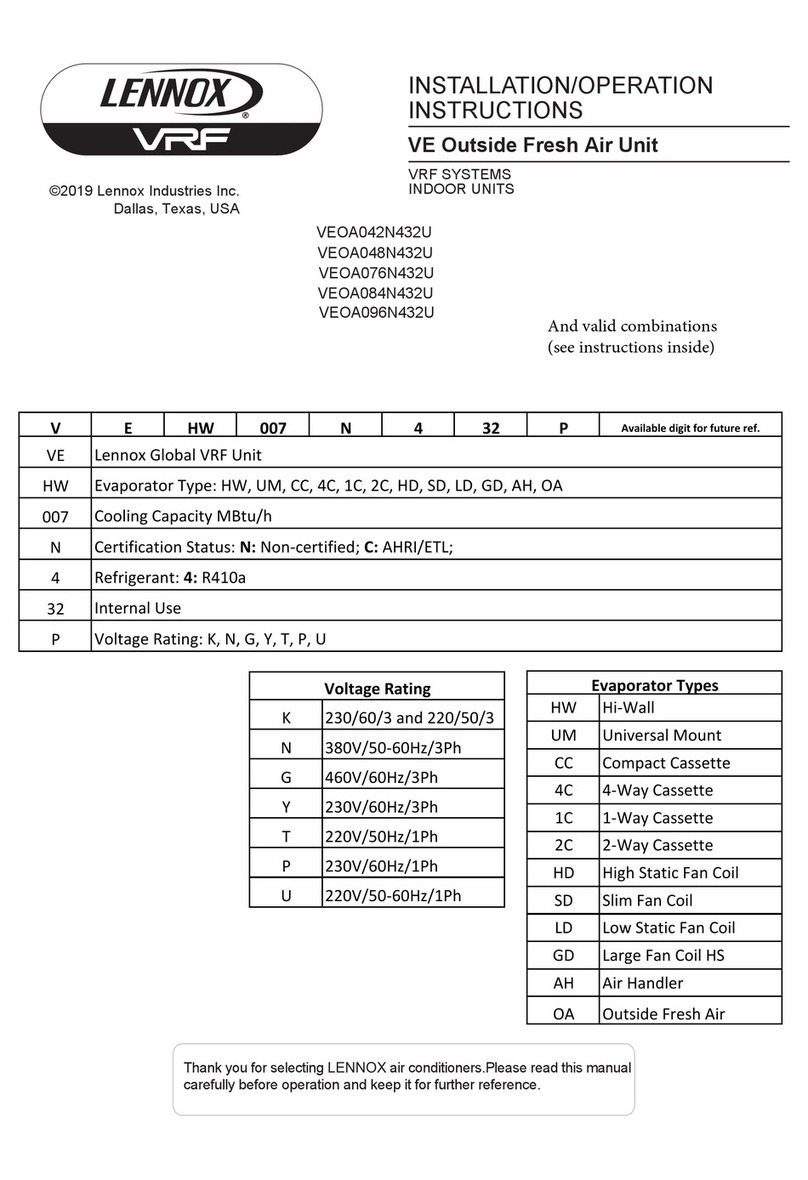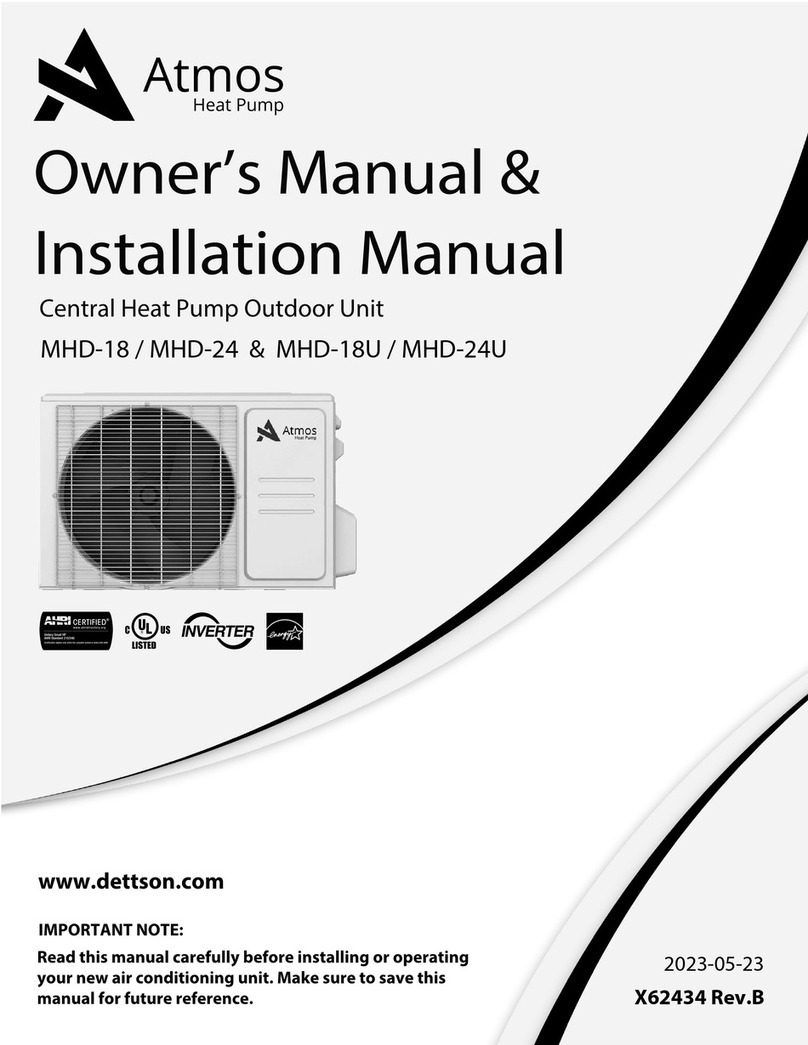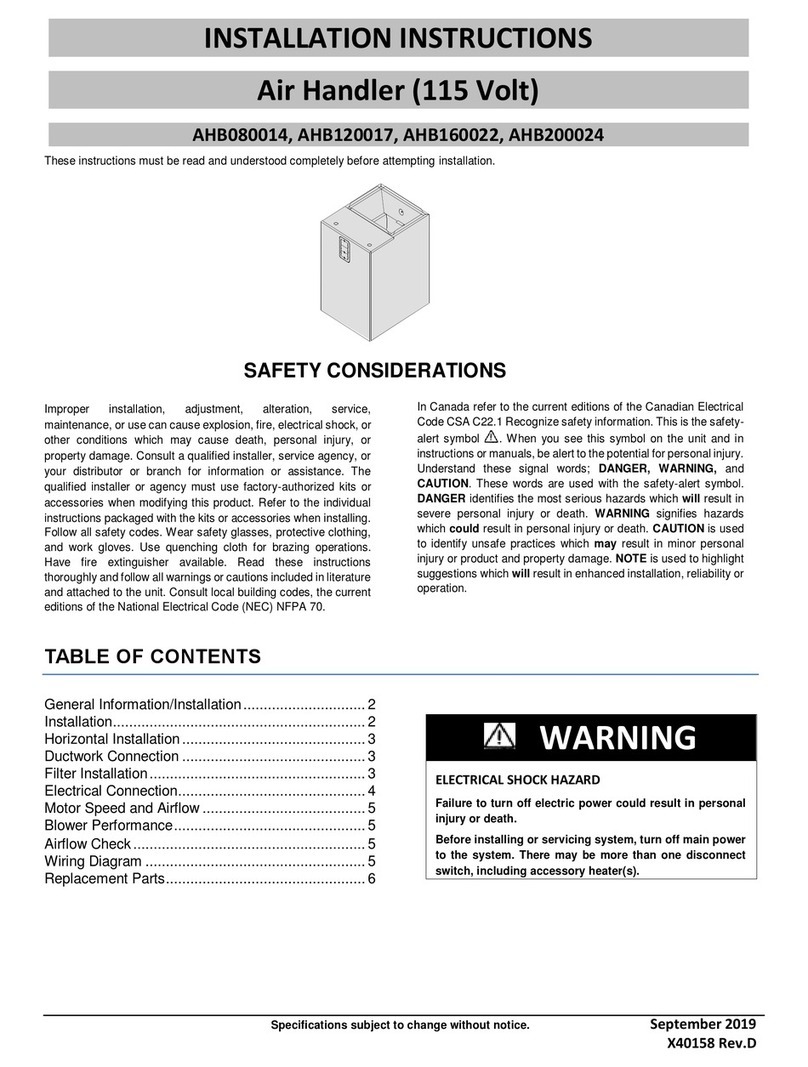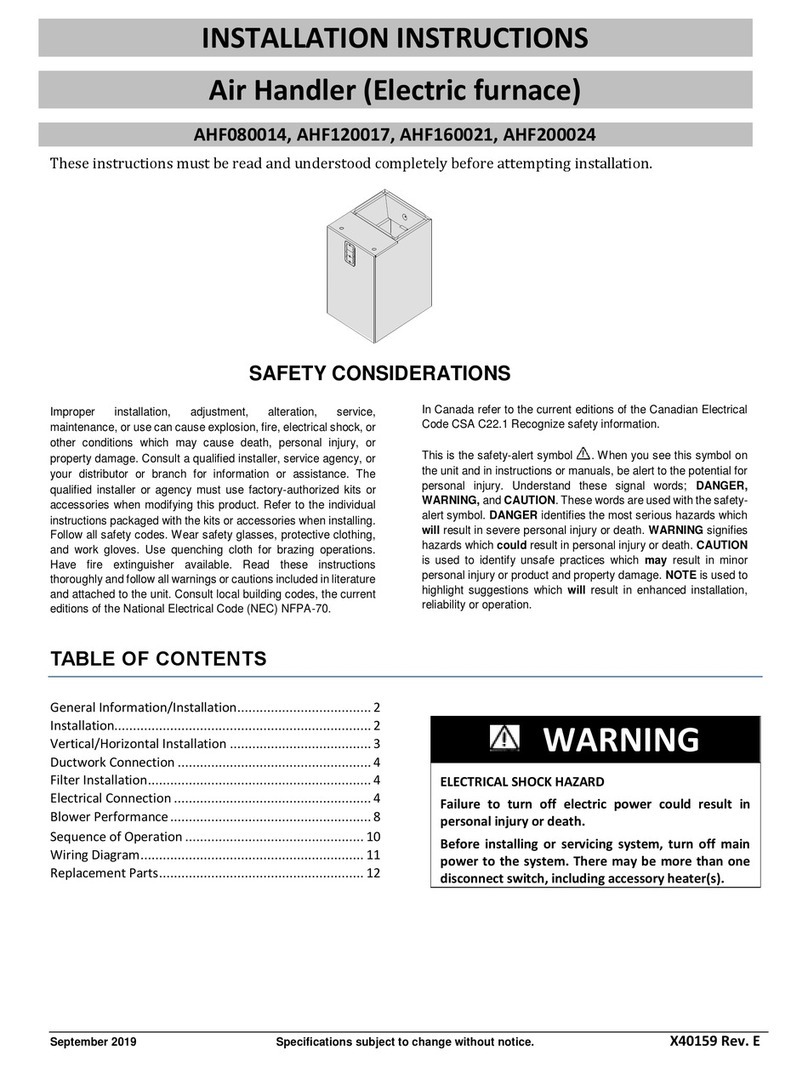
1.4.1) Preparation & Requirements
Find a location on an outside wall that meets all the
conditions stated in section 1.1. Consult Figure 2 for
the main dimensions of the system components.
Find the best location suitable inside the building for
the pressure switch junction box. See Figure 3. Using
the mounting template supplied with the venter box,
drill all necessary holes (flue-pipe hole, mounting
hole, etc.) on the outside wall, at the desired location.
WARNING
The fan-motor assembly and the pressure
switch junction box must be mounted
vertically to ensure proper operation of the
fan proving switch and to prevent motor
bearing wear.
1.4.2) Installation on a COMBUSTIBLE
wall
WARNING
Do not remove the exterior sleeve in the
case of combustible walls. This sleeve is
necessary for combustible walls.
At this point, the unit is ready to be installed on the
exterior wall. To do so, take the assembled unit
outside and insert the vent pipe into the opening from
outside and bring the wall plate assembly flush with
the exterior wall. Secure with four screws. If the wall is
made of cement, brick or concrete, cement anchors
should be used. Step figure 4A.
1.4.3) Installation on a
NON-COMBUSTIBLE wall
Remove the exterior sleeve as shown on figure 4B.
To remove this part, simply unhook its retaining clips.
At this point, the unit is ready to be installed on the
exterior wall. To do so, take the assembled unit
outside and insert the vent pipe into the hole from
outside and bring the wall plate assembly flush with
the exterior wall. Secure with four screws. If the wall is
made of cement, brick or concrete, cement anchors
should be used. See Figure 4B.
1.4.4) Connection to the junction box
The only two non-electrical steps to perform, as far as
the installation is concerned, are the installation of the
pressure switch junction box and the connection of the
pressure sensing pipe to this junction box.
Install the junction box on the inside wall, as closely as
possible to the location where the vent pipe enters this
wall. Secure the junction box to the wall with two
screws, ensuring that the pressure switch is vertical. If
the wall is made of cement, brick or concrete cement
anchors should be used. See Figures 3 and 4.
Connect the pressure tube on the side of the proving
switch. When connecting this line make sure that any
bends in the line are smooth and the line is not
obstructed by a sharp 90oturn. Also make sure that
the connection to the proving switch is tight enough so
as to prevent leaks and not too tight so as to damage
the compression fitting. Teflon tape should not be used
on this fitting.
1.5) Connecting the heating unit
to the SWV
Determine the required vent pipe diameter from
Table 1. Install properly sized vent pipe sections from
the power venter inlet to appliance outlet. Package
SMH-3 requires the installation of a 6 to 5 inch fitting
for the transition between the back-flow damper inlet
and the connecting pipe outlet. Package SMH-5
requires the installation of a 6 to 8 inch fitting for the
transition between the back-flow damper inlet and the
connecting pipe outlet.
1.6) Back-flow damper installation
The sidewall venting system must absolutely be fitted
with the back-flow damper that is included in the
shipment. This damper prevents the back-flow of cold
air when the system is off cycle and all problems
associated with this phenomenon. Before installing the
back-flow damper, install the 6 to 3 inch reducer on the
3 inch venter pipe. Depending on the model, this
reducer might already be installed. The damper must
be installed with the arrow pointing in the direction of
the flue gas that is toward the venter. Furthermore, the
damper must be resting on its fixed stopper when the
unit is not functioning. To achieve this, the damper
must be installed in the HORIZONTAL POSITION with
the arrow at the top of the damper. Level the back-flow
damper on both the horizontal and vertical axes. THIS
DAMPER MUST BE INSTALLED WITHOUT
ALTERATION. If this condition is not respected
unpredictable and erratic operation may result.
